Seeing your furry friend chasing its tail might seem adorable at first, but when this behavior becomes obsessive, it can indicate underlying issues that need addressing. Tail chasing, while normal in puppies as they explore their bodies, can develop into an obsessive-compulsive behavior in adult dogs. This compulsive behavior can stem from various factors, including boredom, anxiety, or even medical conditions. As a responsible pet owner, understanding the root cause and finding effective ways to stop a dog from chasing its tail obsessively is crucial for your pet’s overall well-being. In this guide, we’ll explore various methods and tips to help your dog overcome this potentially harmful habit.
Understanding the Behavior
To effectively address and stop a dog from chasing its tail obsessively, it’s essential to understand the behavior’s roots. Tail chasing might seem like a simple act of playfulness, but it can signify deeper issues. Here are some key factors to consider:
- Normal Play vs. Obsessive Behavior: Puppies often chase their tails as part of normal play and discovery. However, when this behavior persists or intensifies in adult dogs, it may indicate a shift from playful activity to an obsessive-compulsive behavior.
- Boredom and Lack of Stimulation: Dogs, especially those with high energy levels, require adequate physical and mental stimulation. Lack of such stimulation can lead to boredom, resulting in the dog finding ways to entertain themselves, such as tail chasing.
- Anxiety and Stress: Dogs can experience anxiety just like humans. Stressful situations or changes in their environment can trigger anxiety, leading to repetitive behaviors like tail chasing as a coping mechanism.
- Medical Issues: Sometimes, the cause of tail chasing can be medical. Issues like allergies, skin irritations, or even neurological problems can lead a dog to chase its tail in an attempt to relieve discomfort.
- Attention-Seeking Behavior: Dogs are social creatures and may engage in unusual behaviors to attract attention. If a dog learns that tail chasing results in attention from their owners, they might repeat the behavior.
- Genetic Predisposition: Some breeds are more prone to developing obsessive-compulsive behaviors, including tail chasing. It’s important to be aware of your dog’s breed-specific tendencies.
Medical Evaluation
Before addressing behavioral solutions to stop a dog from chasing its tail obsessively, it’s crucial to rule out any medical causes. A thorough medical evaluation by a veterinarian is an essential step. Here’s what it typically involves:
Comprehensive Examination:
The veterinarian will conduct a full physical examination of the dog, paying special attention to the tail and hindquarters. They’ll look for signs of injury, irritation, or any other abnormalities.
Skin and Coat Assessment:
Since skin issues can cause discomfort leading to tail chasing, the vet will examine the dog’s skin and coat. This includes checking for parasites, infections, allergies, or any other dermatological conditions.
Neurological Evaluation:
In some cases, tail chasing can be a symptom of a neurological issue. The vet may perform specific tests to rule out neurological disorders.
Behavioral Assessment:
The veterinarian may inquire about the dog’s behavioral history and observe its demeanor. Understanding the context and frequency of the tail chasing can provide valuable insights.
Diagnostic Testing:
If necessary, the vet may recommend diagnostic tests such as blood work, X-rays, or allergy tests to identify any underlying health problems.
Discussion of Medical History:
The vet will review the dog’s medical history, including any past injuries or treatments, vaccinations, and overall health record.
Once a medical evaluation is completed, if health issues are discovered, the vet will recommend appropriate treatments or medications. If no medical cause is found, the focus can then shift entirely to behavioral strategies to stop the obsessive tail chasing. This medical assessment is a critical step in ensuring that the dog’s behavior is not a manifestation of an underlying health problem that needs immediate attention.
Environmental Enrichment
Creating a stimulating and engaging environment is key to preventing and reducing obsessive tail chasing in dogs. Here’s how to enrich your dog’s environment:
Interactive Toys:
Provide toys that stimulate your dog’s mind and encourage problem-solving. Puzzle toys, treat-dispensing toys, or toys that can be filled with food can keep your dog engaged and mentally stimulated.
Regular Exercise:
Ensure your dog gets enough physical exercise. Tailored walks, runs, or play sessions in the yard can help burn off excess energy that might otherwise be directed towards tail chasing.
Training Sessions:
Regular training sessions using positive reinforcement techniques not only teach your dog new skills but also provide mental stimulation. Short, consistent training periods throughout the day can be very effective.
Socialization:
If possible, arrange playdates with other dogs. Social interactions are important for your dog’s mental well-being and can help distract them from obsessive behaviors.
Safe Space:
Create a dedicated space for your dog where it feels safe and comfortable. This could be a quiet corner with a bed and favorite toys where the dog can retreat when feeling overwhelmed or anxious.
Routine and Structure:
Dogs thrive on routine. Having a predictable daily schedule for feeding, walks, playtime, and rest can provide a sense of security and reduce anxiety-driven behaviors.
Sensory Stimulation:
Incorporate different types of sensory experiences, such as new smells, textures, or sounds. This can be as simple as offering different scented toys or changing the walking route to provide new smells and sights.
Chew Toys and Bones:
Chewing is a natural behavior for dogs and can be very soothing. Provide safe chew toys or bones for your dog to focus its chewing instincts on, rather than its tail.
Interactive Feeding:
Consider using feeding methods that require your dog to work for its food, like food puzzles or scatter feeding, which can keep them occupied and mentally engaged.
By enriching your dog’s environment and daily routine, you not only provide outlets for natural behaviors but also reduce the likelihood of boredom or stress that can lead to obsessive tail chasing. These measures, combined with love and attention, can significantly improve your dog’s quality of life and help manage compulsive behaviors.
Behavior Modification Techniques

Effectively managing and reducing obsessive tail chasing in dogs often requires behavior modification techniques. These techniques focus on changing your dog’s response to triggers and discouraging the unwanted behavior. Here are some strategies:
Ignore the Behavior:
Avoid giving attention to your dog when it starts chasing its tail. Attention, even in the form of scolding, can reinforce the behavior. Instead, calmly redirect your dog’s focus to something else.
Redirection:
When you notice your dog starting to chase its tail, redirect its attention to a more desirable activity. Offer a toy, initiate a game, or engage in a training session. Consistent redirection can gradually teach your dog to seek alternative behaviors.
Positive Reinforcement:
Reward your dog for displaying desirable behaviors that are incompatible with tail chasing. Treats, praise, or play can be used as rewards. Consistently rewarding positive behavior encourages repetition of those behaviors.
Desensitization and Counterconditioning:
If your dog chases its tail due to anxiety or fear, desensitization and counterconditioning can be helpful. Gradually expose your dog to the triggering situation in a controlled manner, while simultaneously providing positive experiences. Over time, this can reduce the dog’s negative response.
Training Commands:
Teach your dog commands like “leave it” or “come” that can be used to interrupt tail chasing. Use positive reinforcement to encourage compliance with these commands.
Clicker Training:
Clicker training can be an effective way to shape desired behaviors. Use a clicker to mark the exact moment your dog performs a desired behavior, followed immediately by a reward. This clear communication can help redirect your dog from tail chasing to more constructive behaviors.
Consistency:
Consistency in training and responses is key. All family members should respond to the tail chasing behavior in the same way to avoid confusing the dog.
Limit Triggers:
Identify and limit triggers that lead to tail chasing. If certain situations or environments provoke the behavior, try to modify or avoid these triggers when possible.
Provide Alternatives:
Teach your dog alternative behaviors to perform when it feels the urge to chase its tail. This might include going to a specific place, chewing a toy, or engaging in a different activity.
Professional Help:
If behavior modification techniques at home are not successful, consider seeking help from a professional dog trainer or a veterinary behaviorist. They can provide tailored guidance and advanced techniques to manage the behavior effectively.
Behavior modification takes time and patience, but with consistent effort, it’s possible to reduce or even eliminate obsessive tail chasing in dogs.
Managing Anxiety and Stress
Addressing underlying anxiety and stress is crucial in stopping a dog from obsessively chasing its tail. Dogs, like humans, can experience anxiety that manifests in various behaviors, including repetitive or obsessive actions. Here’s how to manage and alleviate anxiety and stress in your dog:
Identify the Triggers:
Pay close attention to when your dog starts chasing its tail. Note the environment, time of day, and any other factors that might be triggering the behavior. By understanding the triggers, you can work on removing or reducing them.
Routine and Stability:
Dogs thrive on routine and predictability. Establish a consistent daily routine that includes regular feeding times, walks, and playtime. A stable routine can significantly reduce anxiety levels in dogs.
Exercise and Activity:
Regular exercise is vital for your dog’s physical and mental health. Adequate physical activity helps to burn off excess energy and reduces stress. Ensure your dog gets plenty of exercises every day.
Mental Stimulation:
Keep your dog’s mind engaged with interactive toys, puzzle feeders, and training sessions. Mental stimulation is just as important as physical exercise in managing stress and anxiety.
Create a Safe Space:
Designate a comfortable and quiet space where your dog can retreat when it feels anxious or overwhelmed. This could be a crate with soft bedding, a quiet room, or a special corner with their favorite toys.
Massage and Physical Comfort:
Some dogs respond well to gentle physical touch. Massage or gently pet your dog in a calming manner. This can provide comfort and reduce stress.
Calming Aids:
Consider using calming aids such as pheromone diffusers, calming collars, or soothing music specifically designed for dogs. These can provide a sense of comfort and security to anxious dogs.
Training and Socialization:
Proper training and socialization can help build confidence and reduce anxiety. Exposure to different people, animals, and environments in a controlled and positive manner can make your dog more adaptable and less prone to stress.
Diet and Nutrition:
A balanced diet can influence your dog’s behavior. Consult your vet to ensure your dog is getting the right nutrients. In some cases, dietary supplements or specific diets can help manage anxiety.
Professional Help:
If your dog’s anxiety and stress are severe, it’s essential to seek professional help. A veterinarian or a certified animal behaviorist can provide guidance and possibly recommend medication or more specialized interventions.
Managing anxiety and stress in your dog requires a multi-faceted approach. It’s about understanding your dog’s needs and creating an environment that supports its mental and emotional well-being. With patience and consistency, you can help your dog overcome anxiety and reduce obsessive behaviors like tail chasing.
Prevention Tips

Preventing obsessive tail chasing in dogs requires a proactive and holistic approach. Here are some essential tips to help prevent this behavior:
Adequate Exercise:
Regular and appropriate physical activity is crucial. It helps in burning off excess energy that might otherwise be channeled into obsessive behaviors. Tailor the exercise to your dog’s breed, age, and health status.
Mental Stimulation:
Just as important as physical exercise is mental stimulation. Provide puzzle toys, engage in training sessions, and offer activities that challenge your dog’s mind. This helps prevent boredom, a common trigger for obsessive behaviors.
Routine Health Checks:
Regular veterinary check-ups can help identify and address any underlying medical conditions that might contribute to obsessive behaviors. Early detection and treatment are key.
Balanced Diet:
Ensure your dog is on a balanced and nutritious diet. Sometimes nutritional deficiencies can contribute to odd behaviors. Consult with your vet to confirm your dog is getting all the necessary nutrients.
Positive Reinforcement Training:
Encourage and reward desired behaviors. Avoid negative reinforcement, which might aggravate anxiety or stress, potentially leading to more obsessive behaviors.
Environmental Enrichment:
Create an environment that’s engaging and enriching for your dog. This includes having a variety of toys, safe spaces, and opportunities for exploration and play.
Socialization:
Regular socialization with other dogs and people can help prevent anxiety and stress. Ensure these interactions are positive and controlled.
Stress Management:
Identify and minimize stressors in your dog’s environment. A calm and predictable environment can significantly reduce anxiety-driven behaviors.
Consistent Routine:
Dogs thrive on routine. Having a predictable schedule for feeding, walks, playtime, and rest can provide a sense of security and stability.
Professional Guidance:
If you notice early signs of obsessive behavior, don’t hesitate to seek advice from a professional dog trainer or behaviorist. Early intervention can prevent the behavior from becoming ingrained.
Avoid Punishment:
Never punish your dog for chasing its tail. This can increase stress and anxiety, making the problem worse. Instead, redirect the behavior positively.
Regular Grooming:
Sometimes, discomfort from mats, fleas, or other skin issues can lead to tail chasing. Regular grooming and flea control can help prevent this.
By implementing these prevention tips, you can create an environment and lifestyle for your dog that discourages the development of obsessive behaviors like tail chasing. Remember, a happy, healthy, and mentally stimulated dog is less likely to develop such habits.
Conclusion
Stopping a dog from chasing its tail obsessively involves a combination of understanding, patience, and proactive measures. From ensuring proper medical evaluation to providing environmental enrichment and behavior modification techniques, the journey requires commitment and consistency. Remember, each dog is unique, and what works for one might not work for another. If you find yourself struggling with your dog’s behavior, don’t hesitate to seek professional help. With the right approach, patience, and care, you can help your dog overcome this obsessive behavior and lead a happy, healthy life.












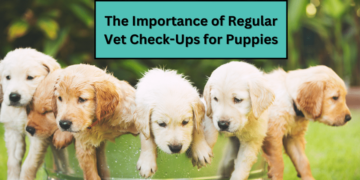


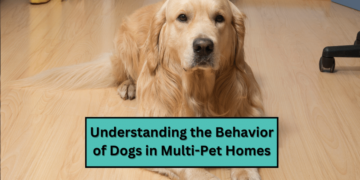
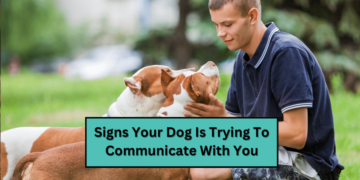
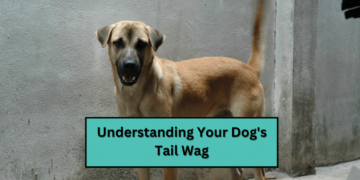

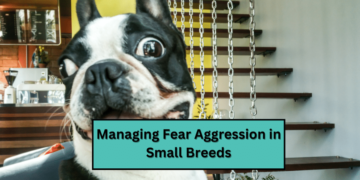
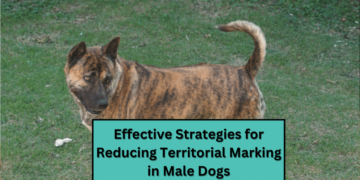
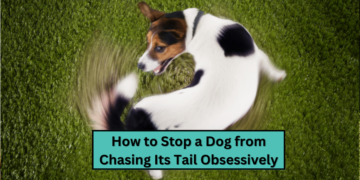




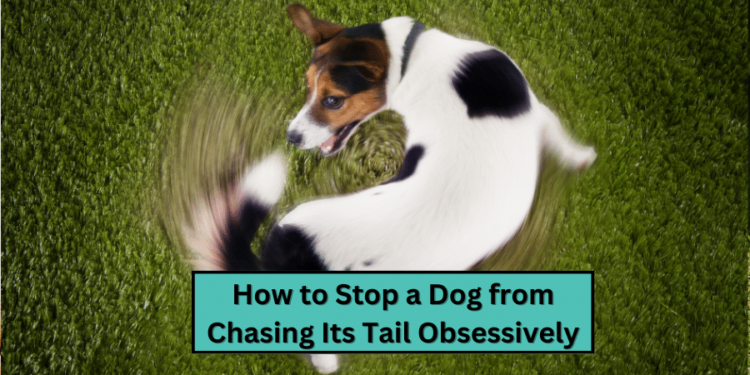








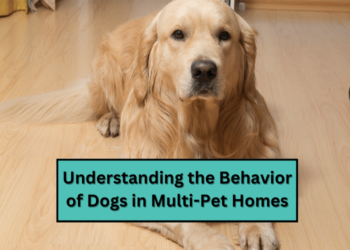
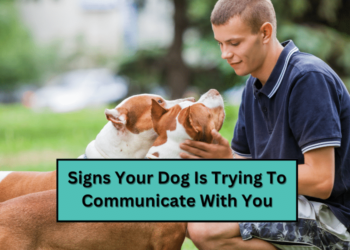
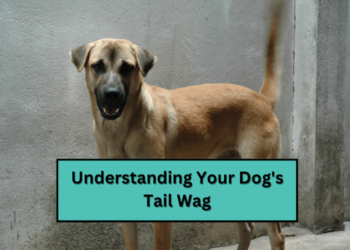














Discussion about this post